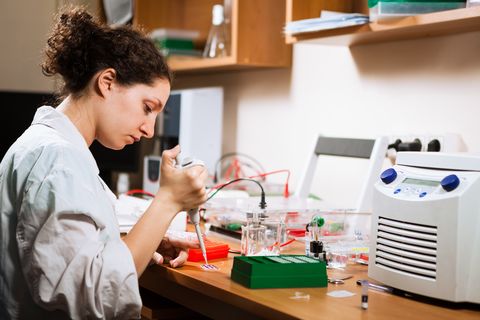Cutting edge eDNA research to help maintain high quality drinking water

The latest techniques in environmental DNA (eDNA) research are being used by United Utilities and Cardiff University to help maintain high quality drinking water for North West England and understand the causes of taste and odour issues.
Water Magazine reports the water company and the university’s School of Earth and Environmental Sciences and School of Biosciences have joined forces as part of a two year project that will investigate the levels of two naturally occurring organic chemicals which can cause a musty or earthy odour and taste.
Geosmin and 2-Methylisoborneol (2-MIB) are produced by various cyanobacteria. Traditional methods used to detect them in water samples are labour intensive, but cutting edge eDNA techniques can provide more thorough results much more quickly, enabling better visibility of the sources of the organic chemicals in the water cycle.
The eDNA method allows scientists to get a detailed view of the types of natural bacteria in reservoir water, and how this varies with the seasons. This means the exact species producing geosmin and 2-MIB can be pinpointed, giving water companies the information they need to address the causes of taste and odour issues in a quicker, more targeted way. This proactive approach reduces the potential impact on water quality for customers and could also help water companies save money, United Utilities spends around £2m a year dealing with taste and odour issues in its drinking water.
The national eDNA project is led by a team from Cardiff University, who have been working across the water industry to establish a collaborative approach and help determine best practice for maintaining or improving water quality in reservoirs.
In the United Utilities and Cardiff University project, water samples will be taken from a reservoir every two weeks until December 2023. They will be tested by their laboratories, and the results analysed to provide recommendations for further studies or changes to processes.
The activity within United Utilities is being supported by a team of graduates in the water company’s annual CEO Challenge. They have been tasked with improving water quality by combating taste and odour issues in innovative ways, and as part of their work the eDNA project is being used on a United Utilities reservoir for the first time.
Sophie Marr, project manager for the CEO Challenge team, said “Our challenge is a really important one not only for the company but our customers too, and has given us a fantastic opportunity to explore new scientific techniques and work collaboratively within United Utilities and beyond.
“We’ve already been tackling the problem internally by raising awareness and organising water tasting training sessions for our water treatment colleagues, and we’ve also developed a dedicated mobile app so that taste and odour issues can be more comprehensively logged.
“We’re excited to work with Cardiff University colleagues on this part of the project and hope to uncover a wealth of useful information on the sources of these organic chemicals that will enhance the great quality drinking water our region enjoys.”
Grant Batty, Water Treatment Director at United Utilities, said “While not harmful to health, these chemicals can be detected by human smell and taste receptors in very small quantities, so it’s vital that we take action when they’re present in our drinking water.
“We already have rigorous procedures in place to detect and deal with geosmin and 2-MIB, and this innovative work by our graduate challenge team will take our efforts up a notch and help us deal with the root causes before they become an issue in our water supplies.
“We’ve all been really impressed by their work so far and look forward to seeing how the project progresses to support our company-wide focus on water quality first.”
Dr Rupert Perkins, Reader in Marine and Freshwater Biosciences at Cardiff University, said “At Cardiff University we have been working closely with the UK water industry for some time looking at ways to determine triggers for taste and odour events. This project is another exciting step in improving best practice for water quality in reservoirs and reducing water quality risks for the public.
“It’s really important for us to work closely with industry colleagues so that our research produces results that lead to real-world solutions to their water security needs.”








